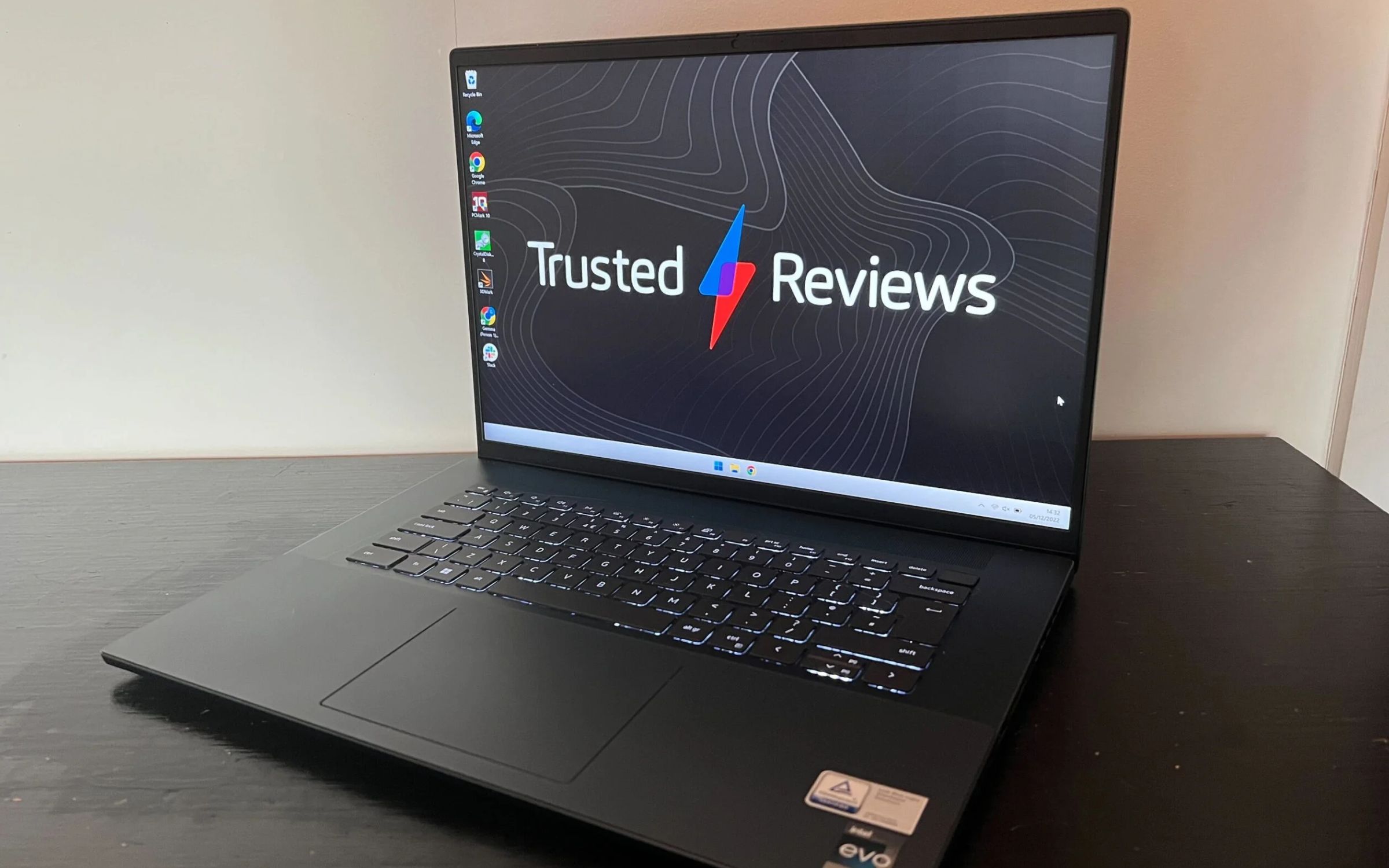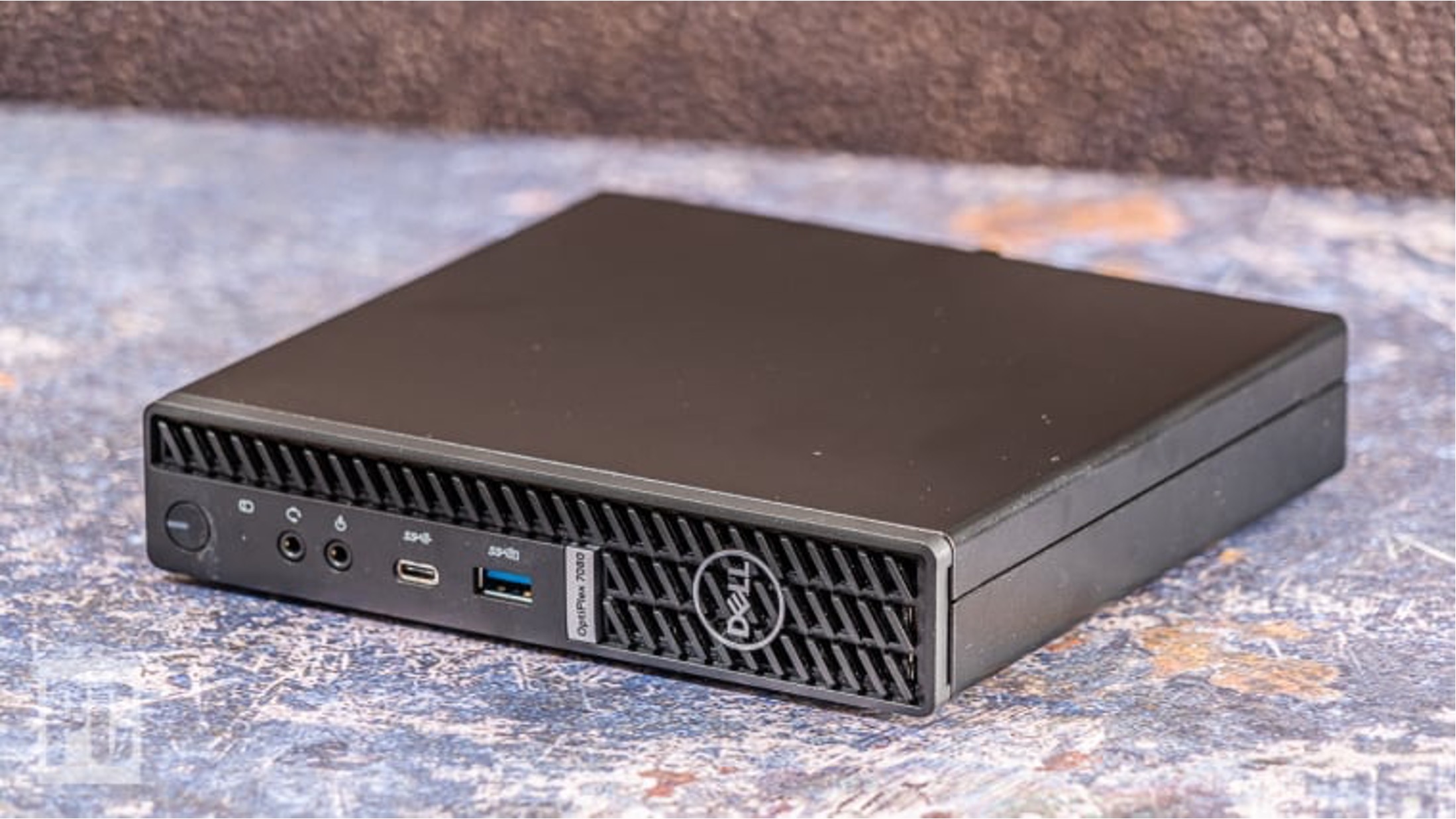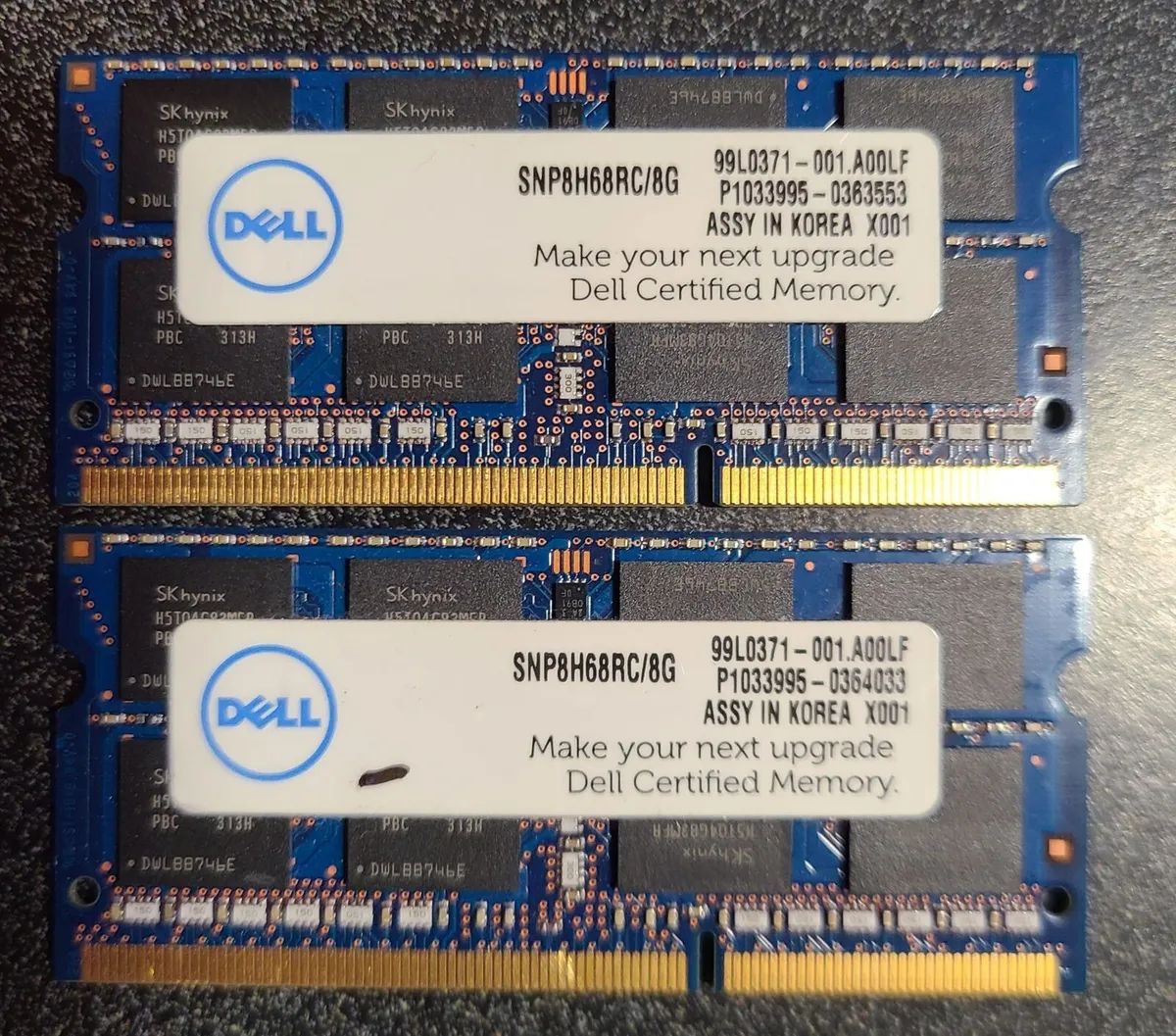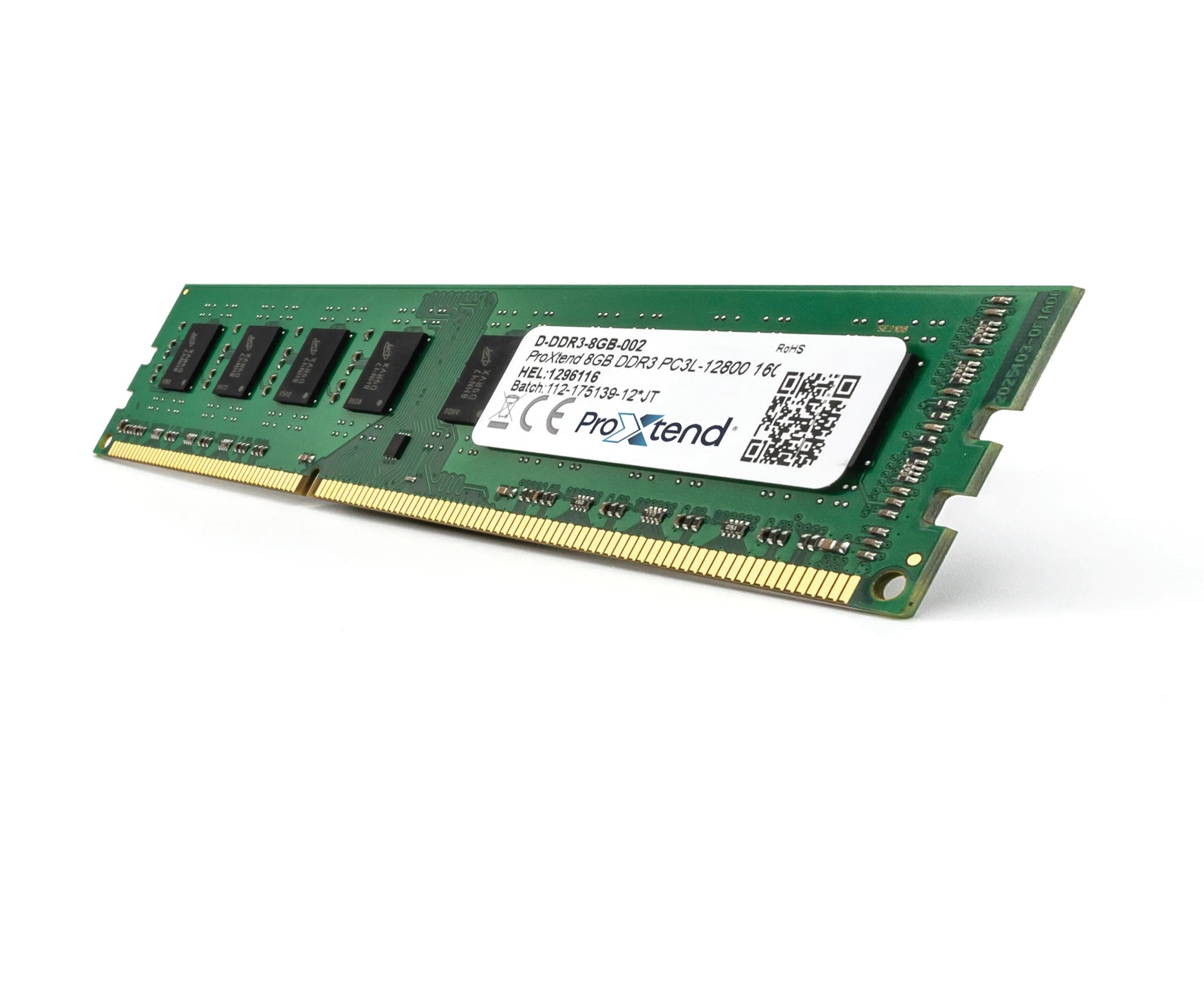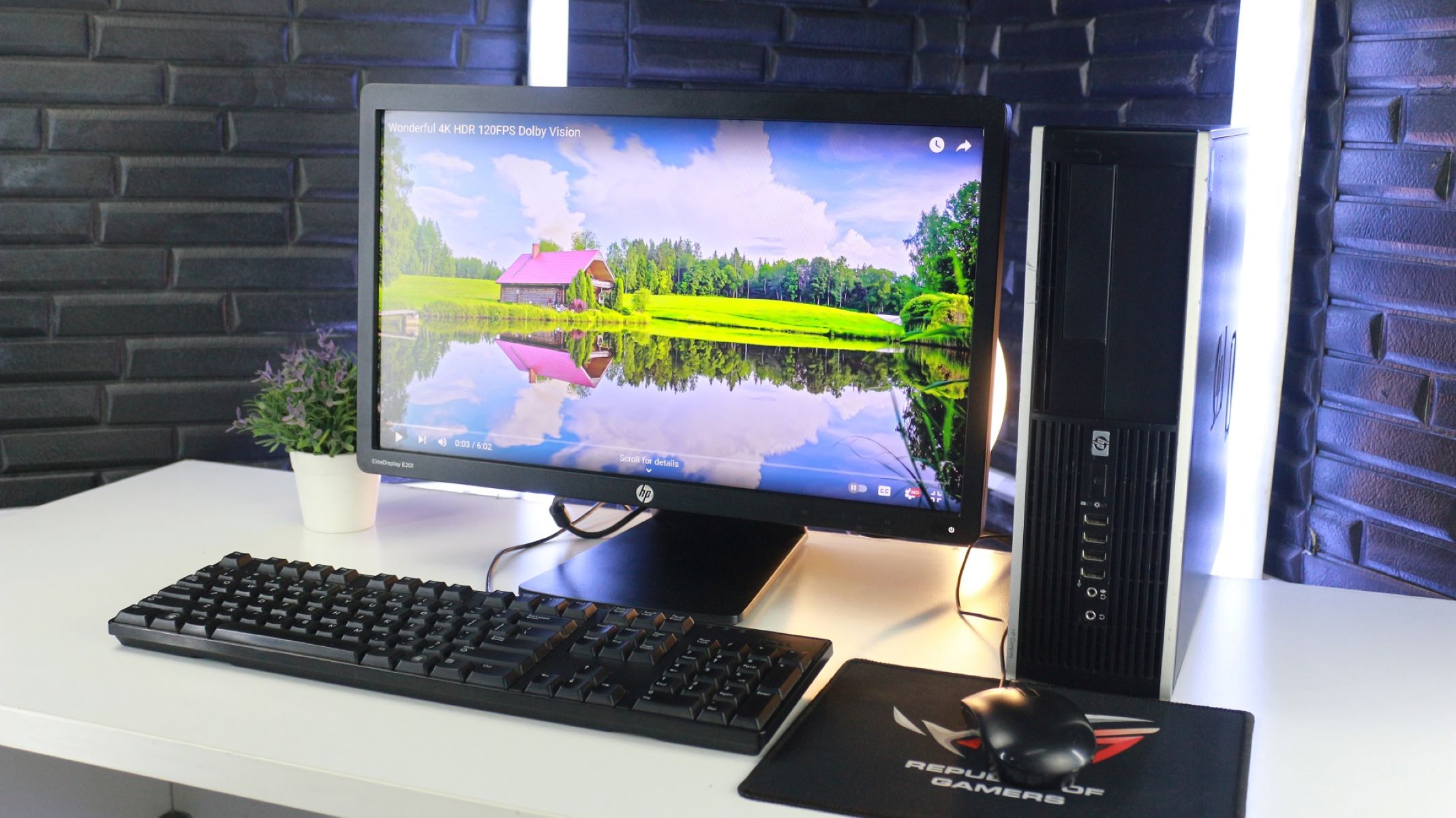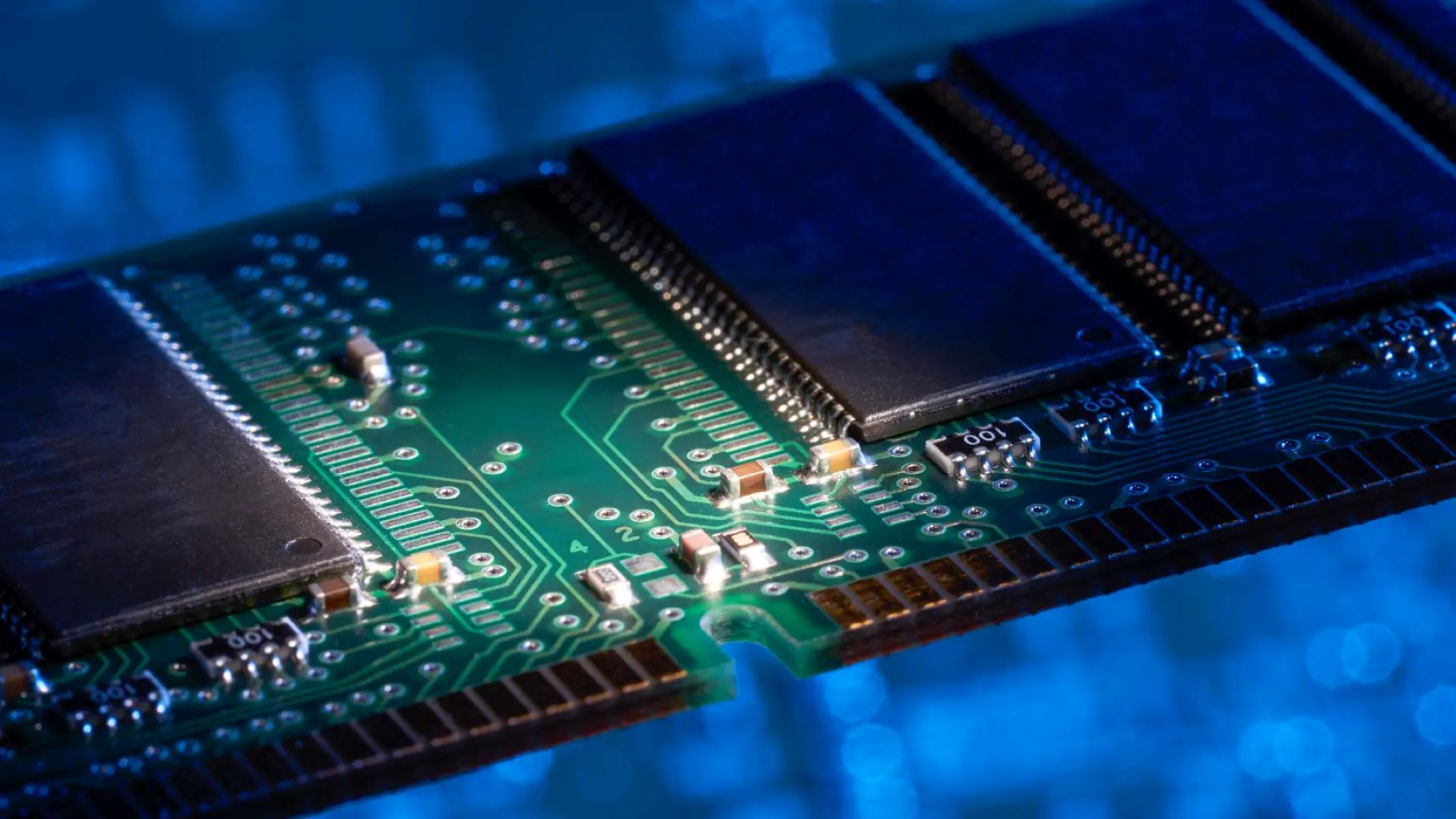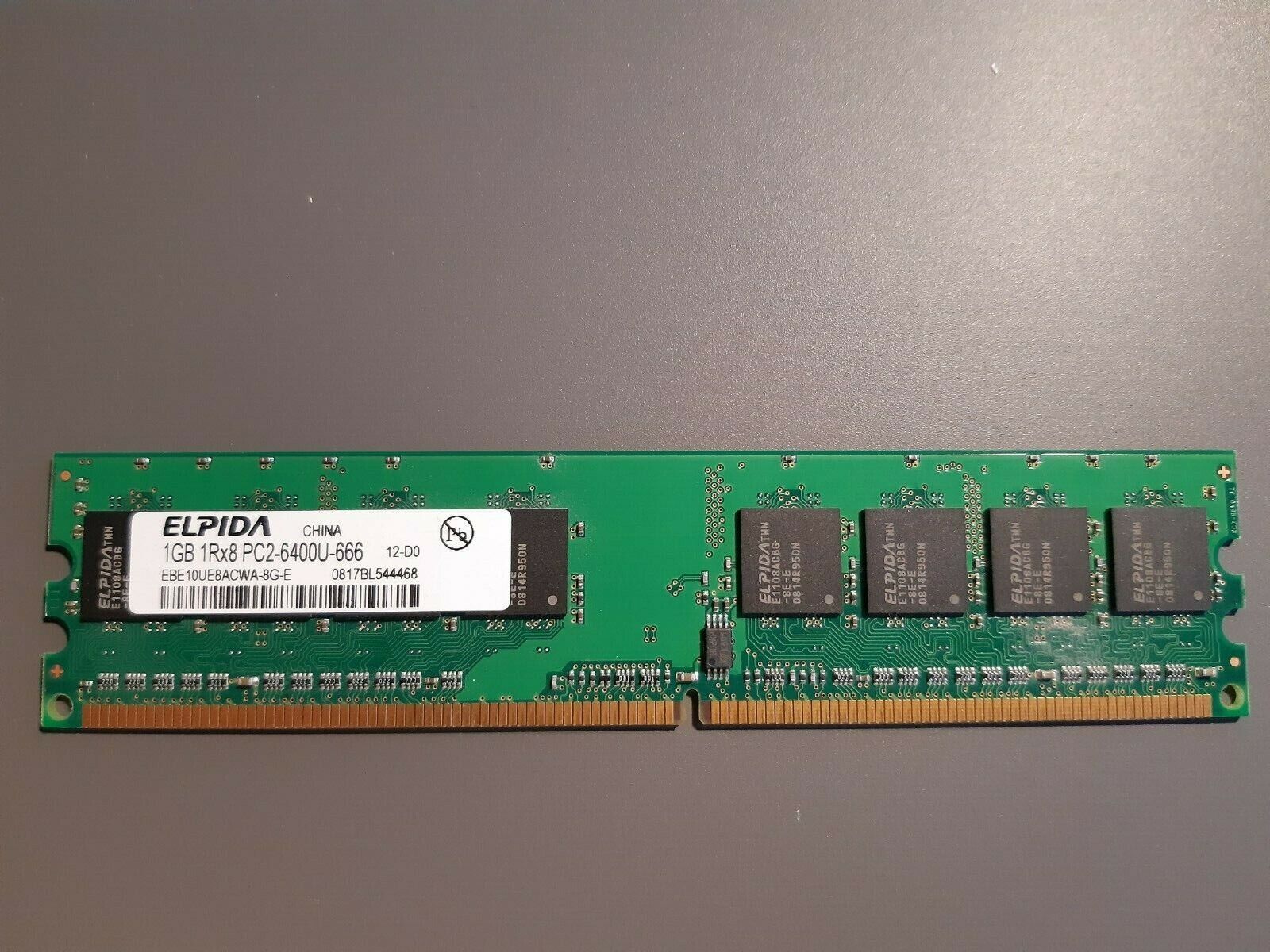Introduction
Plex has become one of the most popular media server applications, allowing users to organize and stream their personal media collection across various devices. It offers a user-friendly interface and supports a wide range of media formats, making it a go-to choice for many individuals and households.
If you are considering setting up a Plex server, one of the key factors to take into account is the amount of RAM (Random Access Memory) you will need. RAM plays a crucial role in the performance and smooth operation of Plex, as it helps in buffering, transcoding, and handling multiple streams simultaneously. Understanding how Plex utilizes RAM and determining the optimal RAM requirements for your specific needs is essential for a seamless streaming experience.
In this article, we will explore the factors to consider when determining the amount of RAM you need for your Plex server. We will discuss the minimum RAM requirements set by Plex, as well as recommended RAM configurations for optimal performance. Additionally, we will delve into factors such as the number of concurrent streams you plan to support and provide tips on optimizing RAM usage with Plex.
Whether you are a casual user streaming media within your home network or setting up a server for a larger audience, understanding the RAM needs of Plex will help you make informed decisions and ensure a smooth and enjoyable media streaming experience.
What is Plex?
Plex is a powerful media server application that allows users to organize, manage, and stream their personal media collection. It acts as a hub for all your movies, TV shows, music, photos, and other media files, making them easily accessible from any device connected to your Plex server. Whether you’re at home or on the go, Plex provides a seamless streaming experience on a wide range of platforms, including smartphones, tablets, smart TVs, game consoles, and computers.
One of the standout features of Plex is its ability to automatically retrieve metadata for your media files, such as movie posters, plot summaries, cast and crew information, and more. This enhances the visual appeal of your media library and provides users with a comprehensive and immersive viewing experience. Plex also supports various media formats, including popular file types like MP4, MKV, MP3, and JPEG, as well as less common formats like FLAC, AVI, and RAW image files.
In addition to organizing and streaming local media files, Plex offers a wide range of online content options. Users can access a vast collection of movies, TV shows, and web series through Plex’s official channels. These channels include popular streaming services such as Netflix, Hulu, and Amazon Prime Video, as well as niche channels for specific genres and interests. With Plex, you can have all your favorite content in one place, eliminating the need to switch between different apps or platforms.
Another noteworthy feature of Plex is its ability to transcode media files on-the-fly. Transcoding is the process of converting media files into a format that can be optimized for streaming on specific devices or networks. Plex automatically detects the client device and network conditions and adjusts the media file format and quality accordingly. This ensures smooth playback across different devices and network speeds, allowing you to enjoy your media on any screen without worrying about compatibility issues.
With its user-friendly interface, extensive media management capabilities, and broad device compatibility, Plex has revolutionized the way we consume and share media. It brings together your personal media collection and online content into a unified and accessible platform, making it a must-have application for media enthusiasts and home entertainment enthusiasts alike.
How does Plex use RAM?
RAM (Random Access Memory) is a crucial component for Plex server performance. It plays a significant role in various operations, including buffering, transcoding, and handling multiple streams concurrently. Understanding how Plex utilizes RAM can help you determine the optimal amount of RAM required for your server setup.
When a user accesses media content through Plex, the server needs to buffer the file to ensure smooth playback. The buffered content is temporarily stored in RAM, allowing for quick and seamless access. The amount of RAM allocated for buffering depends on factors such as the size and type of media files being played, as well as the network conditions and device capabilities.
Transcoding is another resource-intensive task that heavily relies on RAM. Transcoding is the process of converting media files from one format to another in real-time to ensure compatibility with the client device. This is particularly important when streaming media to devices with limited codec support or low network bandwidth. Plex uses RAM to store the transcoded segments and facilitate smooth playback without buffering or stuttering.
Furthermore, RAM is essential for handling multiple streams simultaneously. If you have multiple users streaming content from your Plex server, each stream requires a specific amount of RAM to handle its buffering and transcoding needs. The more concurrent streams you plan to support, the more RAM you will need to ensure optimal performance and prevent any lag or buffering issues.
Plex also uses RAM for caching metadata information. When you add new media files to your server, Plex automatically retrieves metadata such as movie posters, plot summaries, and episode information. This metadata is stored in RAM for faster access and improved browsing performance. Additionally, caching metadata reduces the load on the server’s storage device, optimizing overall system performance.
It’s important to note that the RAM usage by Plex can vary depending on server settings, media formats, and the number of concurrent streams. Plex provides options to customize the transcoding settings, including video quality, subtitle handling, and audio conversion. These settings directly impact the amount of RAM required for transcoding operations.
In summary, Plex uses RAM for buffering, transcoding, handling multiple streams, and caching metadata. Understanding how Plex utilizes RAM can help you determine the appropriate amount of RAM needed for your server setup, ensuring a smooth and uninterrupted streaming experience for all your users.
Minimum RAM requirements for Plex
Plex has established minimum RAM requirements to ensure optimal performance and smooth operation of its media server application. While these requirements can vary depending on the specific use case and the size of your media library, it’s important to meet or exceed the minimum RAM specifications recommended by Plex.
At a minimum, Plex recommends a server configuration with 2GB of RAM. This should be sufficient for small-scale deployments or individual users who primarily stream media within their local network. With 2GB of RAM, you can handle basic transcoding and support a few concurrent streams without experiencing significant performance issues.
However, it’s important to note that the minimum RAM requirements provided by Plex may not be sufficient for more demanding scenarios. For example, if you plan to transcode high-definition (HD) videos or stream media to multiple remote devices, you may require more RAM to maintain smooth playback and prevent buffering. The number of concurrent streams and the complexity of the media files being played also play a role in determining the minimum RAM requirements.
It’s worth mentioning that meeting the minimum RAM requirements does not guarantee flawless performance in all scenarios. Other factors such as the CPU processing power, network bandwidth, and storage speed also contribute to the overall performance of your Plex server. Allocating additional RAM beyond the minimum requirements can help accommodate unexpected spikes in user activity or handle more demanding transcoding tasks.
To determine the appropriate RAM configuration for your Plex server, consider the size of your media library, the number of users or devices you plan to support, and the types of media files you will be streaming. If your server will primarily serve as a media hub for a small household with a limited number of devices, meeting the minimum RAM requirements should suffice. However, if you expect heavy usage, concurrent streams, or plan to transcode high-quality media, you may need to allocate more RAM to ensure a smooth and uninterrupted streaming experience.
Remember, the minimum RAM requirements provided by Plex are just a starting point. Your specific needs and usage patterns should dictate the amount of RAM you allocate to your server. Providing sufficient RAM will not only improve the performance of your Plex server but also enhance the overall streaming experience for you and your users.
Recommended RAM for Plex
While Plex provides minimum RAM requirements, it’s recommended to allocate more RAM to your server to ensure optimal performance, especially if you anticipate heavy usage, large media libraries, or a significant number of concurrent streams. The specific recommendations may vary based on your use case, but here are some general guidelines to consider when determining the recommended RAM for your Plex server.
For small-scale deployments or individual users with a moderate media library, a recommended RAM configuration would be 4GB. This allows for smoother transcoding and handling of multiple concurrent streams, ensuring a seamless streaming experience. With 4GB of RAM, you have more headroom for handling the demands of transcoding and caching metadata, reducing the likelihood of buffering or delays.
If you have a larger media library, multiple users, or plan to transcode high-definition (HD) videos frequently, increasing the RAM allocation is advisable. For medium-sized setups, a recommended RAM configuration would be 8GB. This provides ample resources for buffering, transcoding, and handling multiple concurrent streams simultaneously, even with more demanding media files.
For advanced users or large households with extensive media libraries and heavy usage, allocating 16GB or more of RAM is recommended. This higher RAM capacity ensures smoother operation and allows for transcoding multiple HD streams simultaneously. It helps prevent bottlenecks and provides a more robust streaming experience, especially when dealing with complex media files or handling peak usage periods.
It’s important to note that these recommended RAM configurations are not set in stone and can vary depending on factors such as the specific needs of your media library, the types of media files you typically stream, and the number of concurrent streams you plan to support. Additionally, consider the capabilities of your CPU and ensure that it can handle the transcoding demands that may arise alongside the increased RAM allocation.
By providing higher amounts of RAM, you are allowing your Plex server to operate more efficiently, handle multiple tasks simultaneously, and accommodate the varying demands of your user base. It helps create a buffer for unexpected peak usage, reducing the chances of buffering or stuttering during media playback.
It’s worth mentioning that while increasing the RAM allocation for your Plex server is beneficial, it should be coupled with other hardware considerations such as CPU performance, network bandwidth, and storage speed. A balanced approach to hardware configuration will ensure a well-rounded and optimized Plex server setup, delivering the best streaming experience to you and your users.
Factors to consider when determining RAM requirements
When determining the RAM requirements for your Plex server, several factors need to be taken into consideration. Understanding these factors will help you make an informed decision and ensure optimal server performance. Here are some key factors to consider when determining the RAM requirements for your Plex server.
1. Media Library Size: The size of your media library plays a vital role in determining the RAM requirements. Larger media libraries require more RAM for efficient buffering and handling of metadata. If your library contains a substantial number of media files, it’s recommended to allocate more RAM to ensure smooth operation and quick access to media content.
2. Media File Types and Resolutions: Different media file types and resolutions have varied RAM requirements. High-definition (HD) videos or 4K resolution files, for instance, require more resources for transcoding. Consider the types and resolutions of the media files you plan to stream and allocate sufficient RAM to handle the potential transcoding needs.
3. Number of Concurrent Streams: The number of concurrent streams refers to the number of users or devices accessing your Plex server simultaneously. Each concurrent stream requires a certain amount of RAM for buffering and transcoding. Consider the expected usage patterns and allocate enough RAM for smooth playback and seamless streaming, even during peak usage periods.
4. Transcoding Settings: Plex allows customization of transcoding settings, including video quality, subtitle handling, and audio conversion. Higher quality settings require more RAM for efficient transcoding. Adjust these settings based on the capabilities of your server and the usage patterns of your media content. Be aware that increasing the quality settings may also increase the RAM requirements.
5. Future Growth and Expansion: It’s important to consider future growth and expansion when determining RAM requirements. If you anticipate an increase in media content or a larger user base over time, allocating additional RAM from the outset can help accommodate future demands without the need for immediate hardware upgrades. This approach ensures scalability and a longer lifespan for your server setup.
6. Other Resource Demands: RAM is just one component of a larger system. Consider the other resource demands of your Plex server, such as CPU processing power and network bandwidth. Ensure that your server’s hardware configuration is balanced and capable of handling the combined demands of transcoding, networking, and storage alongside the RAM allocation.
By considering these factors, you can accurately determine the optimal RAM requirements for your Plex server. Allocating enough RAM will help maintain smooth and uninterrupted streaming, regardless of your media library size, file types, or the number of concurrent streams. It sets the foundation for a reliable and high-performance Plex server setup.
How many concurrent streams can be supported with different amounts of RAM?
The number of concurrent streams that can be supported by your Plex server depends largely on the amount of RAM allocated. While the exact number may vary based on factors such as media file types, resolutions, and transcoding settings, here is a general overview of how different amounts of RAM can handle concurrent streams.
1. 2GB RAM: With the minimum recommended RAM of 2GB, you can typically support 1-2 concurrent streams. This configuration is suitable for small-scale deployments or individual users streaming media within their local network. However, it may struggle with transcoding high-definition (HD) videos or serving multiple remote devices simultaneously.
2. 4GB RAM: Allocating 4GB of RAM allows for a smoother streaming experience and supports around 3-4 concurrent streams. This configuration is appropriate for small to medium-sized setups with a moderate media library. It provides more headroom for transcoding and handles multiple streams with ease.
3. 8GB RAM: Increasing the RAM allocation to 8GB allows for a more robust Plex server setup, capable of supporting approximately 8-10 concurrent streams. This configuration is suitable for medium-sized setups or households with a larger media library and heavier usage patterns. It can handle transcoding of high-definition (HD) videos and serve multiple users concurrently without performance degradation.
4. 16GB RAM or more: Allocating 16GB or more of RAM provides even greater capacity for handling concurrent streams. With this configuration, you can support 15+ concurrent streams, making it ideal for advanced users or large households with extensive media libraries and heavy usage. It ensures smooth playback, transcoding, and multitasking capabilities, even during peak periods of activity.
It’s important to note that the actual number of supported concurrent streams can vary based on factors such as media file types, codecs used, network bandwidth available, and the CPU’s transcoding capabilities. Additionally, enabling hardware acceleration or utilizing a more powerful CPU can enhance the server’s ability to handle concurrent streams.
To maximize the number of supported concurrent streams, it’s not only essential to allocate sufficient RAM but also ensure a well-balanced hardware configuration that includes a capable CPU and ample network bandwidth. Regularly monitor your server’s performance and adjust the hardware resources as needed to maintain smooth streaming and user satisfaction.
By matching your RAM allocation with the expected number of concurrent streams, you can ensure optimal performance and a seamless streaming experience for yourself and your users. Plan your server’s resources accordingly to meet the demands of your media library and user base while allowing room for future growth.
Tips for Optimizing RAM Usage with Plex
Optimizing RAM usage is crucial for ensuring optimal performance and efficient operation of your Plex server. By following these tips, you can make the most out of the allocated RAM, improve streaming capabilities, and provide a seamless media experience for your users.
1. Transcoding Settings: Adjusting the transcoding settings in Plex can help optimize RAM usage. Selecting a lower video quality or utilizing direct play or direct stream options can reduce the demand for transcoding, which in turn reduces the strain on RAM. Experiment with different settings to strike the right balance between video quality and resource utilization.
2. Optimize Media File Formats: Transcoding media files can be resource-intensive. To minimize the need for transcoding and reduce RAM usage, aim to use media files that have codecs and container formats compatible with most client devices. This allows for direct streaming without the need for extensive transcoding operations.
3. Limit Concurrent Streams: Consider the number of concurrent streams your server can handle based on available RAM. Restrict the number of simultaneous streams to a manageable level to ensure optimal performance. Encourage users to limit their streams to one or two at a time, especially if you have less RAM available.
4. Upgrade RAM: If you find that your current RAM capacity is consistently maxed out and causing performance issues, upgrading to a higher capacity is a recommended solution. Increasing the RAM allocation allows for more efficient buffering, transcoding, and handling of concurrent streams, resulting in a smoother streaming experience.
5. Enable Hardware Acceleration: Utilize hardware acceleration features if supported by your server’s CPU. Hardware acceleration shifts the burden of media processing tasks, such as transcoding, from the CPU to dedicated hardware components, reducing the strain on RAM and improving overall performance.
6. Regularly Update Plex Software: Keeping your Plex server software up to date ensures you have access to the latest performance optimizations and bug fixes. Updates often include enhancements that can improve RAM usage and server efficiency, resulting in a smoother streaming experience.
7. Monitor and Optimize Server Settings: Regularly track your server’s performance by monitoring resource usage, including RAM. Analyze the server logs and adjust settings as needed to optimize performance. Fine-tuning parameters such as transcode quality, network streaming settings, and caching options can help optimize RAM usage.
8. Consider Plex Pass Hardware Transcoding: If you have a Plex Pass subscription and a compatible CPU, enabling hardware transcoding can significantly reduce the demand on RAM. Hardware transcoding utilizes the dedicated transcoding capabilities of certain CPUs, offloading the processing burden from RAM and improving overall performance.
These tips can help you make efficient use of RAM with your Plex server, improving streaming performance and user satisfaction. Experiment with different settings, monitor performance, and make adjustments as necessary to find the optimal balance for your specific setup.
Conclusion
Determining the appropriate RAM requirements for your Plex server is crucial for achieving optimal performance and ensuring a seamless media streaming experience. By considering factors such as the size of your media library, the number of concurrent streams, and the types of media files you plan to serve, you can allocate the right amount of RAM to meet your needs.
Plex recommends a minimum of 2GB of RAM for basic setups, but it’s often advisable to allocate more RAM to accommodate transcoding, large media libraries, and multiple concurrent streams. For small to medium-sized setups, 4-8GB of RAM is recommended, while more demanding scenarios may require 16GB or more.
Optimizing RAM usage is essential for efficient operation. Adjusting transcoding settings, optimizing media file formats, limiting concurrent streams, enabling hardware acceleration, and regularly updating your Plex server software are all effective strategies to optimize RAM usage and improve overall performance.
Remember to monitor your server’s performance and make adjustments as needed. Upgrading RAM if necessary and considering hardware transcoding with Plex Pass can also significantly enhance server capabilities.
By carefully considering RAM requirements, optimizing settings, and maintaining a balanced hardware configuration, you can ensure a smooth and enjoyable media streaming experience for yourself and your users.









